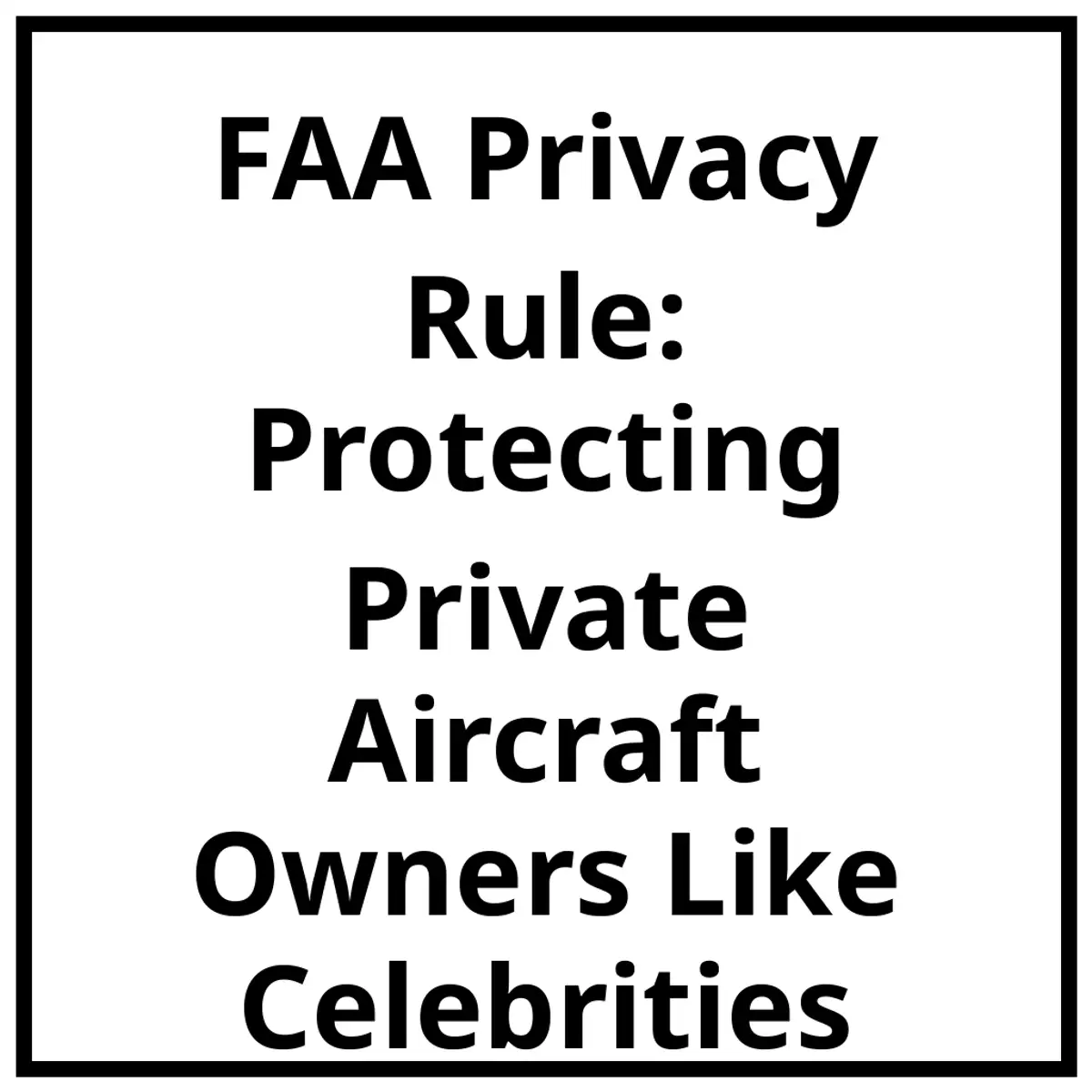The FAA has introduced a new privacy rule allowing private aircraft owners, particularly celebrities, to keep their registration information confidential, a move lauded for enhancing personal security.

In a bold step to safeguard the identities of private aircraft owners, the Federal Aviation Administration (FAA) has unveiled a new rule designed to keep registration information secret. This initiative, effective from March 2025, is particularly beneficial for high-profile personalities, including the likes of musician Taylor Swift and billionaire Elon Musk, who have frequently been subjected to invasive tracking of their private flights. This article explores the context, details, and implications of the FAA’s privacy rule, which seeks to shield the identities of those who own private jets.
Read Also – 👉👉Impact of Tariffs on Consumer Spending: What Americans Need to Know Going Into 2025👈👈
The Rise of Privacy Concerns in Aviation
Understanding Flight Tracking Technologies
With advancements in technology, the ability to track flights has become increasingly sophisticated. Publicly available data, especially from systems like Automatic Dependent Surveillance-Broadcast (ADS-B), has made it simple for anyone with internet access to monitor private flights. This tracking has raised significant privacy concerns, particularly among celebrities and business leaders who find themselves vulnerable to unwanted attention and stalking. The ability to follow individuals like Swift and Musk through flight data poses not just privacy threats but significant security risks, raising questions about how to balance technology with the right to privacy.
Legal Framework Behind The Change
The FAA’s new rule stems from the FAA Reauthorization Act of 2024, a piece of legislation signed into law during the Biden Administration, aimed at addressing burgeoning privacy concerns. This law allows private aircraft owners to request the removal of their names and addresses from public FAA databases, marking a significant shift in how private jets are managed and monitored. Prior to this change, data was accessible to the public, which has led to a rise in what is often termed ‘flight-stalking’ — a practice that not only infringes on personal privacy but poses potential risks to safety.
Implementation and Reactions
How the New Rule Works
- Effective March 2025, private aircraft owners can submit requests electronically to the FAA to withhold their registration details from public databases.
- This process is facilitated through the Civil Aviation Registry Electronic Services (CARES), making it simpler for owners to protect their personal information.
- The FAA is also considering automated defaults to hide personal information in the registry, further enhancing privacy protections.
Evaluating the Impacts of the Privacy Rule
Enhancing Privacy and Security
The introduction of this new FAA privacy rule represents a crucial step forward for individuals in the private aviation sector. By allowing well-known figures to shield their email addresses and other identifiable details from public view, the regulation not only promotes privacy but also mitigates potential security threats, such as stalking or harassment. For instance, reducing media scrutiny on flights could enable celebrities like Swift and Musk to fly with a semblance of normalcy without the constant pressure of public observation regarding their travel patterns.
Challenges for Stakeholders and Accountability
While the privacy rule is a significant advancement for personal security, it also presents challenges for various stakeholders reliant on flight data for legitimate purposes. Companies needing access for maintenance checks, safety compliance, or regulatory oversight might struggle without available data. Furthermore, critics highlight the risks of reduced visibility on private jet usage, particularly regarding environmental accountability, making it harder to track emissions and efforts to combat climate change. The FAA is acknowledging these concerns by actively seeking feedback from stakeholders to ensure that safety and compliance are not adversely affected.
Navigating Future Developments in Aviation Privacy
What Lies Ahead for Privacy and Technology
- As ADS-B technology evolves, further discussions on privacy will remain critical to ensuring that safety and data management practices keep pace with technological advancements.
- The FAA will continue to evaluate the privacy rule’s effectiveness and seek public input on possible future adjustments, which may impact how aviation data is accessed.
- Innovative solutions such as the Privacy ICAO Address (PIA) program offer potential pathways to safeguard privacy while maintaining safety in air travel.
Conclusion
The FAA’s introduction of a new privacy rule for private aircraft owners is a remarkable step towards better protecting individual privacy in the aviation industry. While it offers much-needed confidentiality for high-profile figures, it also raises essential discussions about data access, safety, and environmental impacts. As this policy unfolds and adapts based on feedback from stakeholders and ongoing assessments, it serves as a reminder of the delicate balance that must be struck between personal privacy and the need for transparency in an era where technological advancements are revolutionizing the way we travel. The pursuit of privacy in aviation will undoubtedly continue to be a dynamic conversation reflecting societal values and technological capabilities.
FAQs
What does the new FAA privacy rule entail for private aircraft owners?
The new FAA privacy rule allows private aircraft owners, including celebrities, to request that their registration information, such as names and addresses, be withheld from public FAA databases. This change is aimed at enhancing privacy and security for these individuals, who often face risks of harassment and unwanted media attention due to their flight tracking being publicly accessible. Set to take effect in March 2025, the rule represents a considerable shift in how private flight data is managed, providing owners with greater control over their personal information.
How will this rule impact aviation safety and compliance?
While the enhanced privacy protections are intended to shield individuals from stalking and harassment, this new rule could pose challenges for stakeholders who require access to flight data for safety and maintenance purposes. Companies and regulators that rely on accessible flight records for compliance and oversight may find it more complicated to obtain necessary information, potentially affecting aviation safety audits. The FAA is actively considering these implications and seeking public comments to ensure that the balance between privacy concerns and essential safety functions is maintained.
Will the rule affect public knowledge about private jet environmental impacts?
Yes, the new FAA privacy rule may have implications for public transparency regarding the environmental impact of private jets. By restricting access to flight data, it could become more difficult for environmental organizations and the public to track emissions and gauge the effectiveness of efforts to mitigate climate change impacts from private aviation. Critics argue that this reduced visibility undermines accountability, especially at a time when climate concern is paramount. As various stakeholders voice their opinions, it is crucial for the FAA to address these issues responsibly.
Related Videos
Read Also –
This article is for informational purposes only and does not constitute legal advice. Readers should consult relevant authorities or legal professionals for specific guidance regarding FAA regulations.
Read Also –
| https://www.lawyer-monthly.com/2025/03/taylor-swift-jet-faa-privacy-rule/ |
| https://aerospaceglobalnews.com/news/faa-enables-private-aircraft-owners-to-request-anonymity/ |
Hey! I hope you enjoyed reading this! If you did, could you do me a small favor and hit the like button? It would mean a lot to me and help me reach more people. Thank you so much! Got any thoughts on this post? Drop them in the comments below!
How many stars would you give for my effort?




